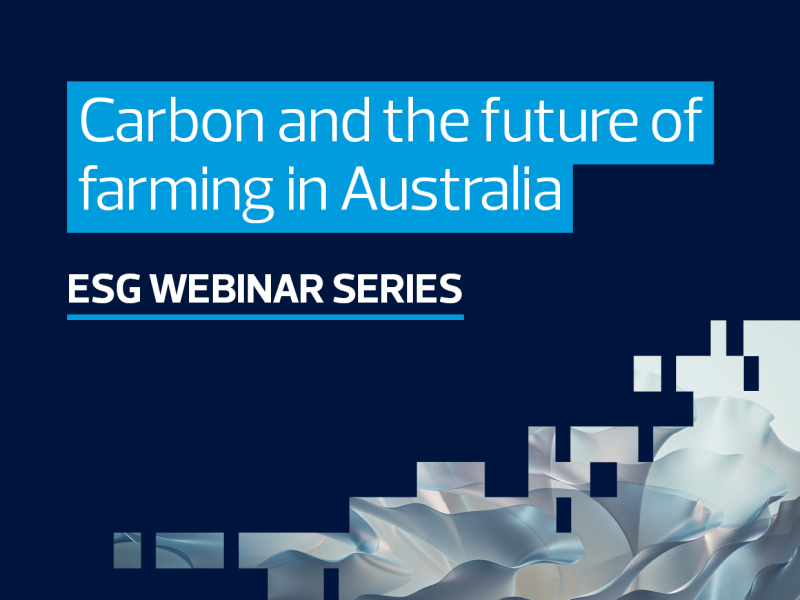As a sustainability advisor, it’s always exciting to hear climate change becoming a focal point in agriculture conversations. However, whether intentional or not, these discussions often bring pressure on farmers to reduce carbon emissions.
At RSM, we work closely with farmers to measure and understand their carbon emissions, often for the first time. This pressure farmers are facing becomes evident in our conversations with them. Once we have completed our calculations and analysis, and shown farmers their carbon emissions, we often hear a telltale question: “How much will this cost me in carbon offsets?”
Considering the increasing focus on climate change, it’s an obvious question, and understanding the implications of a carbon number through a cost lens can be a helpful approach. But this question highlights the problem with our current conversation – it’s creating an impression that net zero is an imminent goal for farmers, and responsibility for it falls squarely on their shoulders. This is far from the truth.
Farmers aren’t expected to buy thousands of dollars’ worth of carbon offsets every year. In fact, even under optimistic scenarios, modelling shows agriculture emissions will only be reduced by about 20 per cent by 2050. This demonstrates a truth we must be pragmatic about: there is no expectation that Australian farmers and the agriculture industry will achieve net zero carbon emissions in the near future.
So, if we aren’t expecting our farmers to achieve net zero, why are we always talking about it? The answer is in one simple word: opportunity. The ag sector is home to some of the most significant climate opportunities in our economy, accounting for around 55% of Australia’s land use[SM1] and nearly 17% of national emissions.
How can farmers take advantage of the net zero conversation?
There are two primary levers available to the farming community to benefit from this conversation: offsets and reductions.
Carbon offsets are a mechanism to compensate for emissions by removing carbon elsewhere, and the resulting offsets can be sold to companies looking to offset their emissions. And they present the opportunity for new income streams for farmers. Farmers can develop carbon offsets through programs such as soil carbon projects and planting non-arable land, and the resulting carbon credits can be used to lower their own emissions or create a new income stream.
Farmers also have a significant opportunity to reduce carbon emissions. There is growing market for lower carbon agriculture products, particularly in export markets, which can provide a price premium. There are several mechanisms that farmers can use to achieve reductions, such as improving livestock management approaches, altering feedstuff, and reducing fertiliser use
Whether you’re looking into offsetting, reducing, or both, the first step is understanding your own emissions profile.
Ultimately, it’s easy to get caught up in the intensity of the conversations around carbon emissions, especially when it is the topic of every conference and event. Our focus needs to be on a pragmatic approach to reducing emissions through identifying the easy-wins and big opportunities for each farm.
FOR MORE INFORMATION
If you’re interested in any of the carbon opportunities on your farm, please reach out to your local RSM adviser today.





